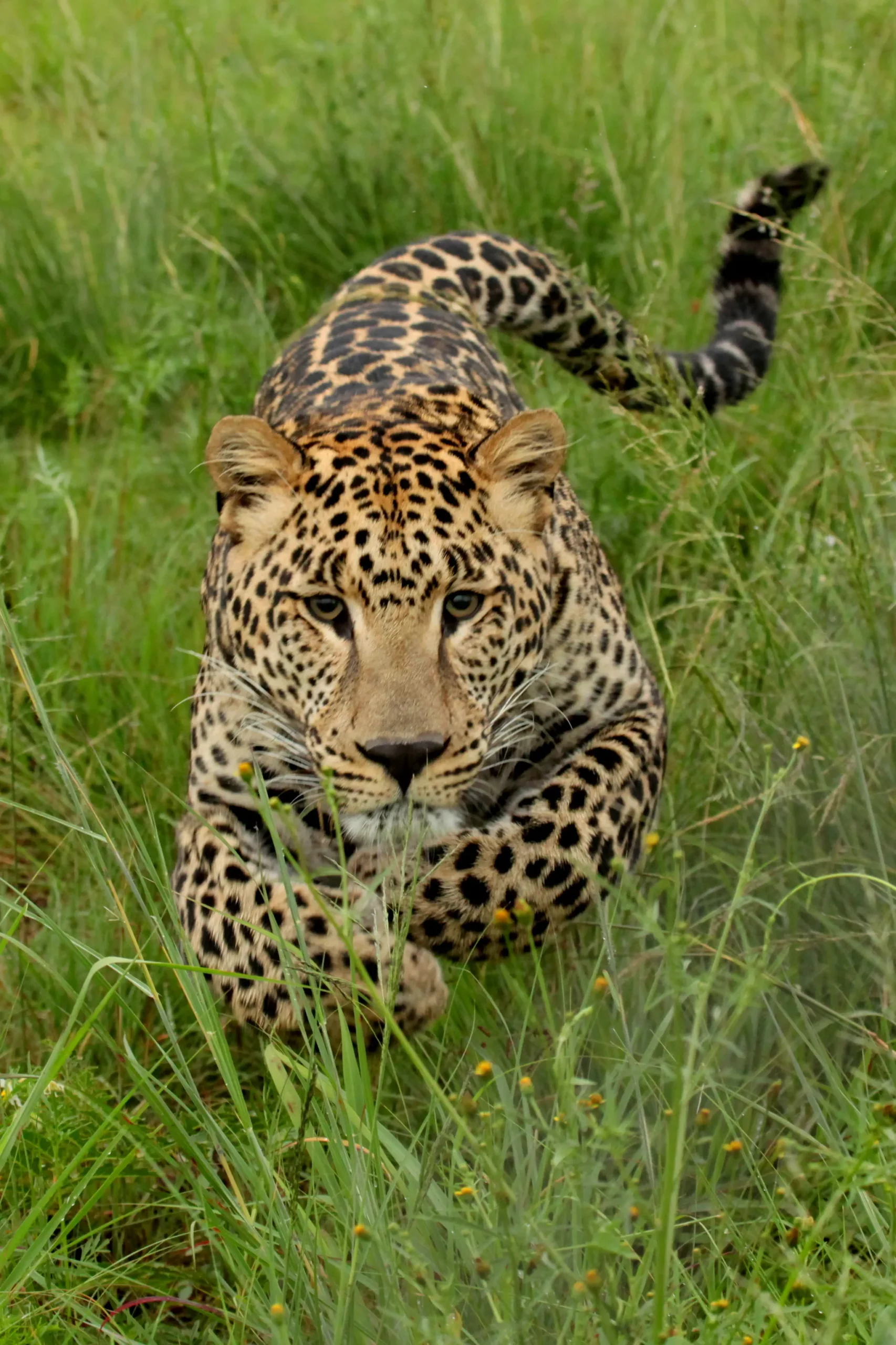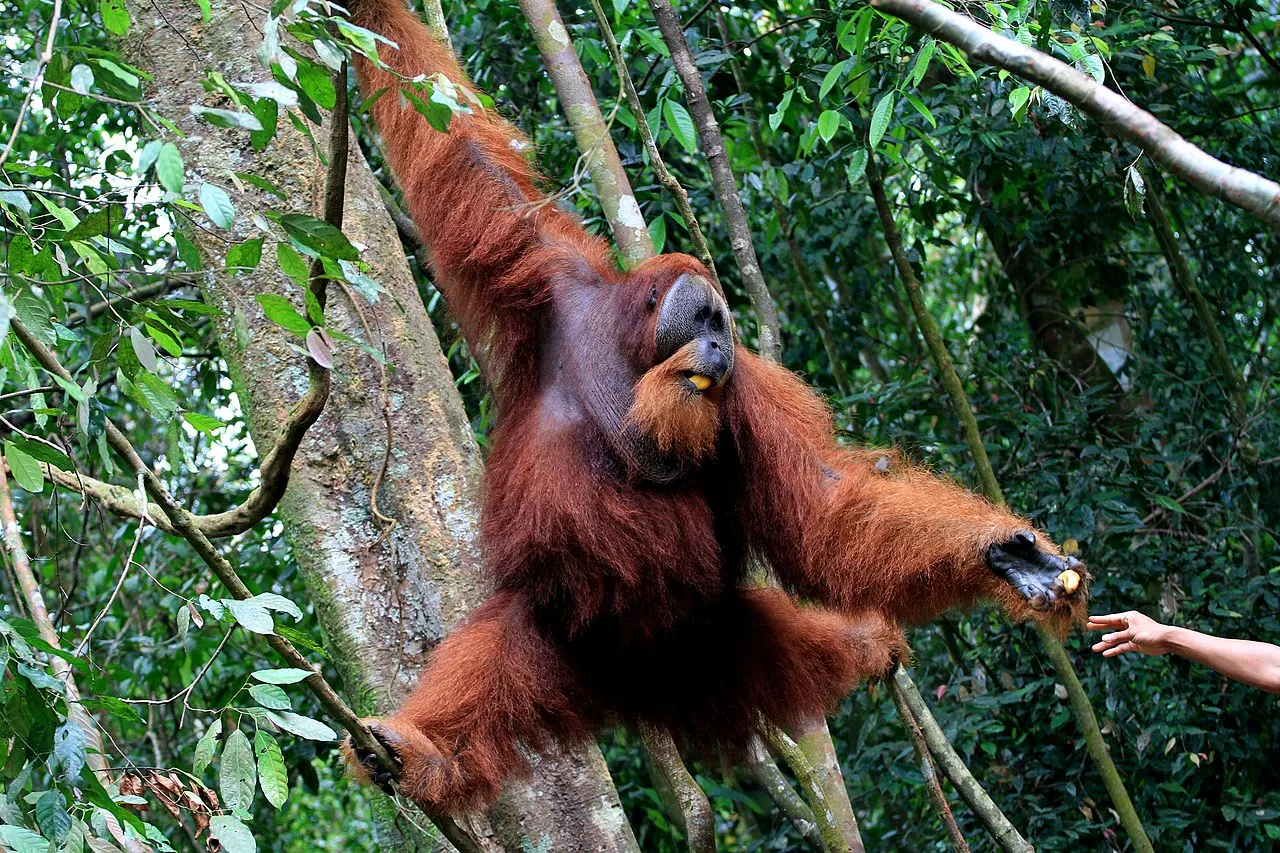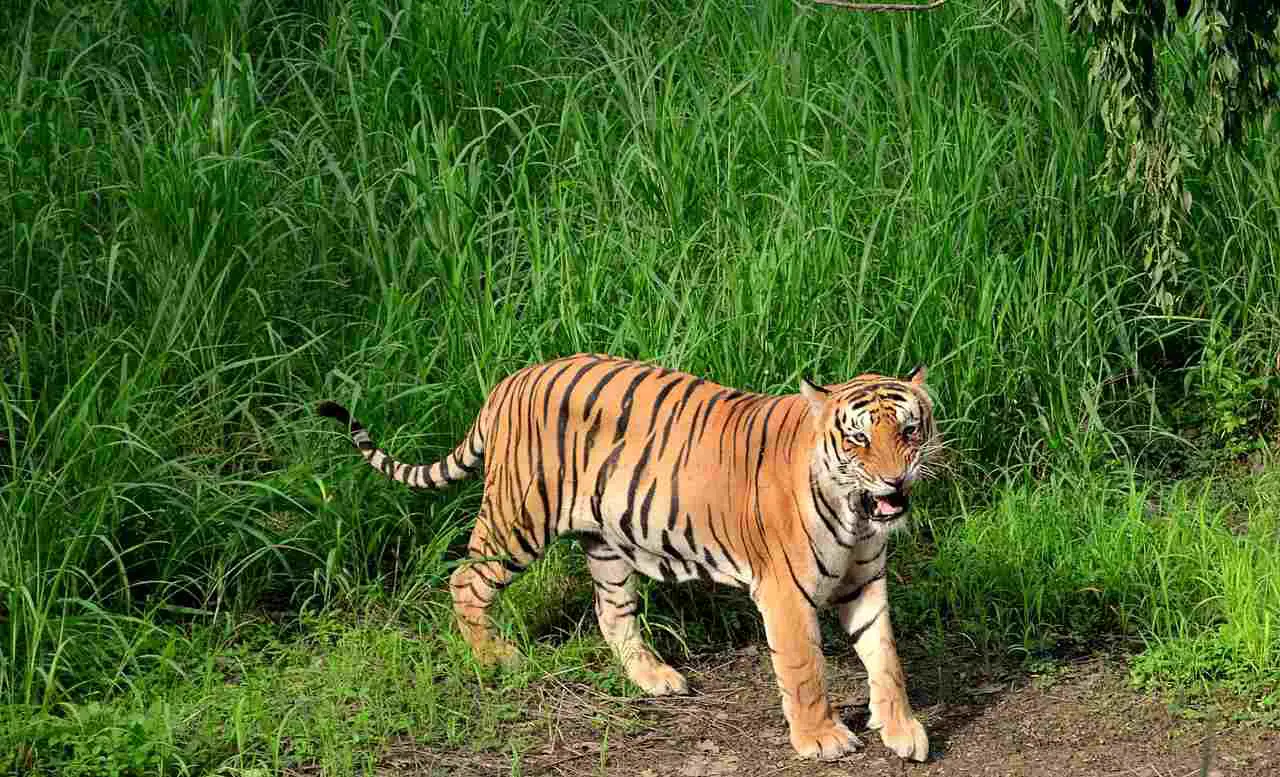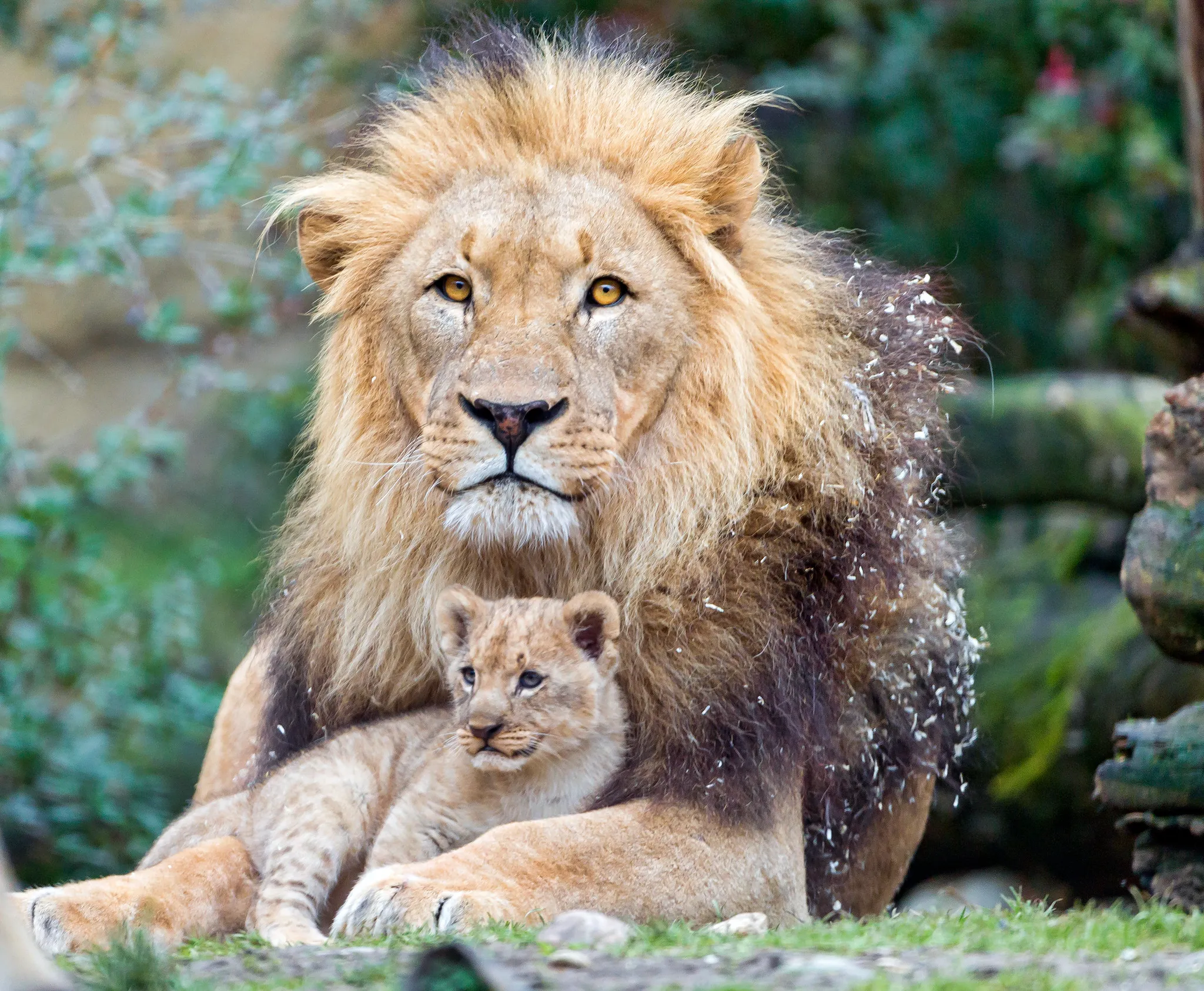Chimpanzee Vs Tiger Fight Prediction, Overall Comparison
The comparison between chimpanzees and tigers delves into the distinct realms of strength, speed, aggression, and overall danger. Analyzing these aspects provides insight into the potential outcomes of a hypothetical encounter between these two species.
I. Strength:
– Tigers, equipped with massive jaws, sharp claws, and powerful canines, are formidable predators capable of hunting large prey such as buffaloes and even elephants. In contrast, while chimpanzees possess strength for their size, they lack the physical prowess to match a tiger, making them ill-equipped for a direct confrontation.
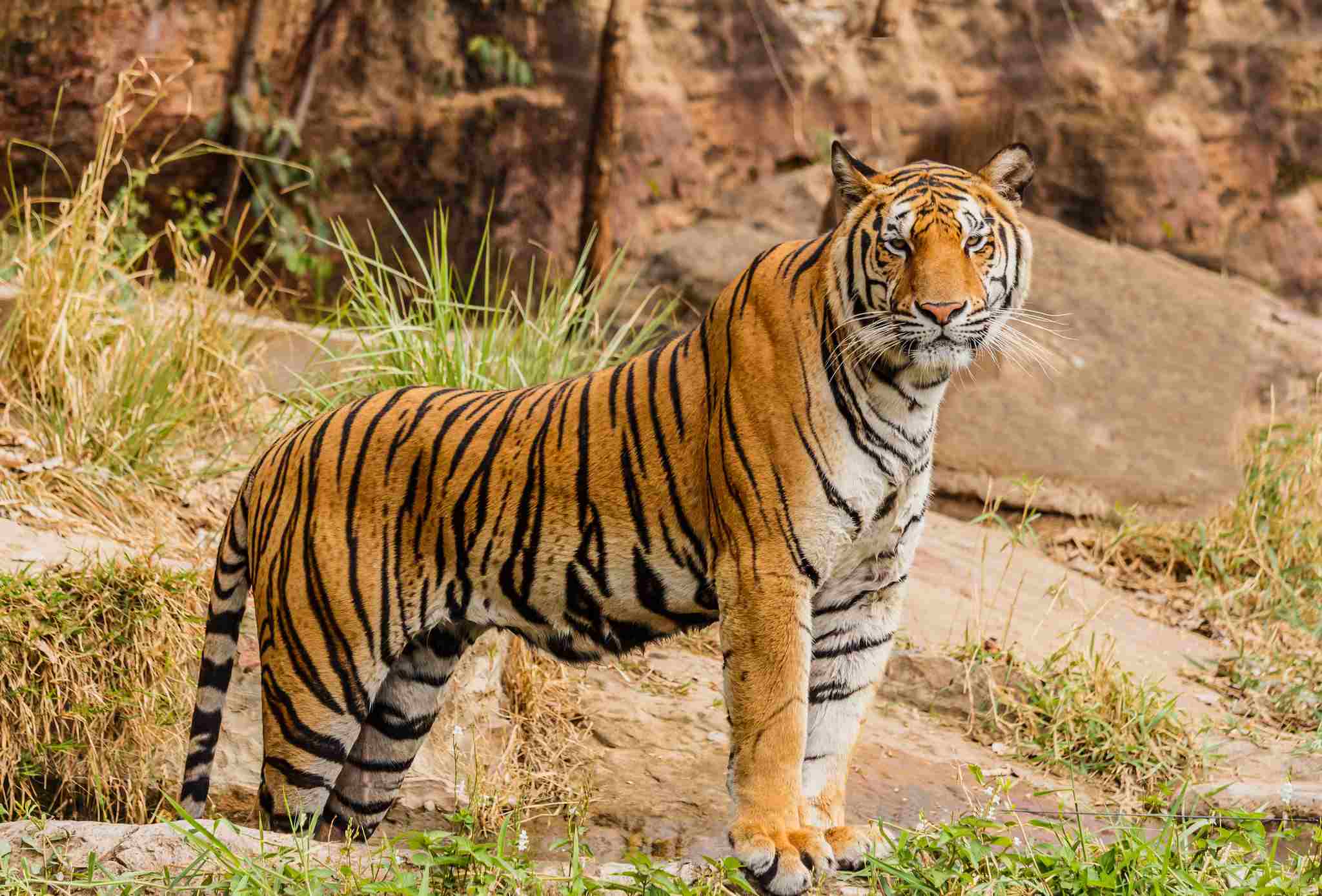
II. Speed:
– Tigers are known for their impressive speed, reaching up to 40+ mph in a run, coupled with the ability to leap over 20+ feet. Chimpanzees, although agile, cannot match the sheer velocity and agility of a tiger, emphasizing the feline’s dominance in terms of speed.
III. Aggression and Danger:
– Tigers are renowned for their aggressive hunting behavior, utilizing a combination of strength, stealth, and predatory instincts. The inherent danger posed by a tiger surpasses that of a chimpanzee, which, despite being powerful and intuitive, lacks the lethal severity of a big cat.

IV. Fight Prediction
– In a fight between a chimpanzee and a tiger, the tiger’s superior physical attributes, including jaw strength, claws, and speed, would likely result in the chimpanzee being overpowered swiftly. Tigers are apex predators with specialized adaptations for hunting, making them formidable opponents.
V. Scientific Perspectives:
– Scientific observations and expert opinions support the consensus that a chimpanzee stands no chance against a tiger in a physical confrontation. The vast difference in size, weaponry, and predatory instincts places the tiger at a distinct advantage.
*Details of Comparison
| Criteria | Chimpanzee | Tiger |
| Taxonomy | Family: Hominidae | Family: Felidae |
| Appearance | Coarse fur, expressive features |
Orange coat with black stripes
|
| Size | Smaller | Larger |
| Weight | Lighter | Heavier |
| Bite Force (PSI) | Not well-documented, strong for size |
1,000 to 1,500 PSI
|
| Physical Offensive Advantages | Agility, tool use |
Powerful jaws, sharp claws
|
| Physical Defensive Advantages | Social structures, climbing |
Camouflage, agility, physical prowess
|
| Speed | Up to 40 km/h (25 mph) |
49 to 65 km/h (30 to 40 mph)
|
| Agility | Climbing, tool use, quick movements |
Agile body, stalking
|
| Senses | Excellent vision, hearing, sense of smell |
Night vision, acute hearing, sense of smell
|
| Overall Physical Capacity | Endurance, dexterity |
Strength, stamina
|
| Habitat Preference(s) and Geographic Region | Dense forests in Central and West Africa |
Varied habitats in Asia
|
| Tracks | Hand and foot impressions |
Paw prints with retractable claws
|
| Lifespan | 40 to 50 years |
15 to 20 years in the wild
|
| Mode of Feeding | Omnivores, frugivores, insectivores |
Carnivores, primarily hunting large ungulates
|
| Intelligence | Highly intelligent, problem-solving, tool use |
Intelligent hunters, lack complex problem-solving
|
| Social Behavior | Highly social, complex communities |
Generally solitary, territorial interactions
|
| Mode of Reproduction | Sexual reproduction, longer gestation, single offspring |
Sexual reproduction, shorter gestation, multiple cubs
|
| Parental Behavior | Strong maternal bonds, extended offspring dependence |
Strong maternal care, cubs independent after 1.5 to 2 years
|
| Proximity to Human-Inhabited Areas | Found near human settlements |
Human-tiger conflicts in overlapping habitats
|
| Behavior Toward Humans | Avoidance, aggression if provoked |
Shy, elusive, potential danger if threatened
|
| Danger Posed to Humans | Generally not highly dangerous |
Can pose a significant threat
|
| Associated Precautions | Caution to avoid provocation |
Strict precautions necessary in tiger habitats
|
| Conservation Status | Endangered or vulnerable |
Endangered or critically endangered
|
1. Taxonomy
Chimpanzee (Pan troglodytes):
Kingdom: Animalia
Phylum: Chordata
Class: Mammalia
Order: Primates
Family: Hominidae
Genus: Pan
Species: P. troglodytes
Tiger (Panthera tigris):
Kingdom: Animalia
Phylum: Chordata
Class: Mammalia
Order: Carnivora
Family: Felidae
Genus: Panthera
Species: P. tigris
2. Appearance
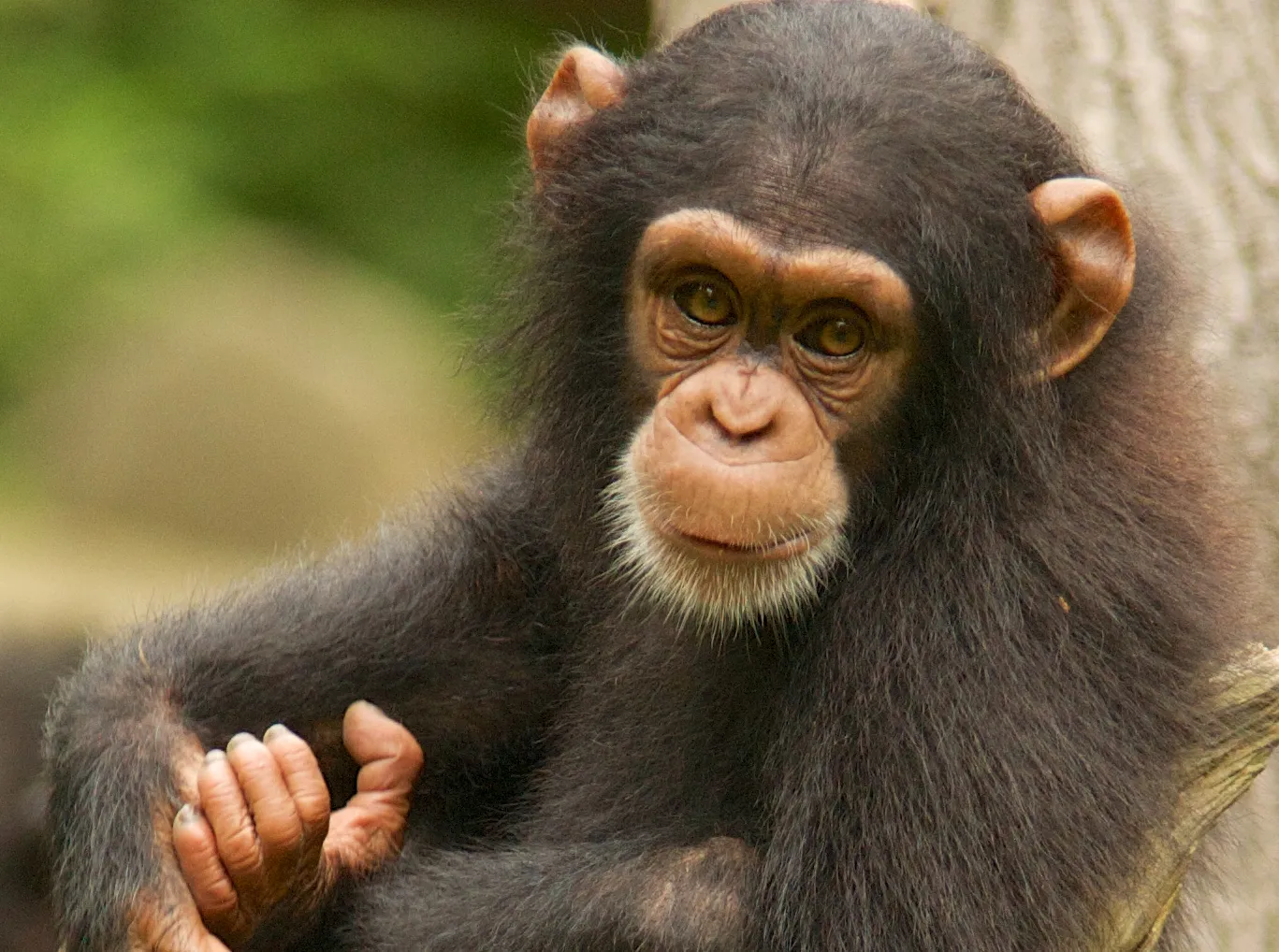
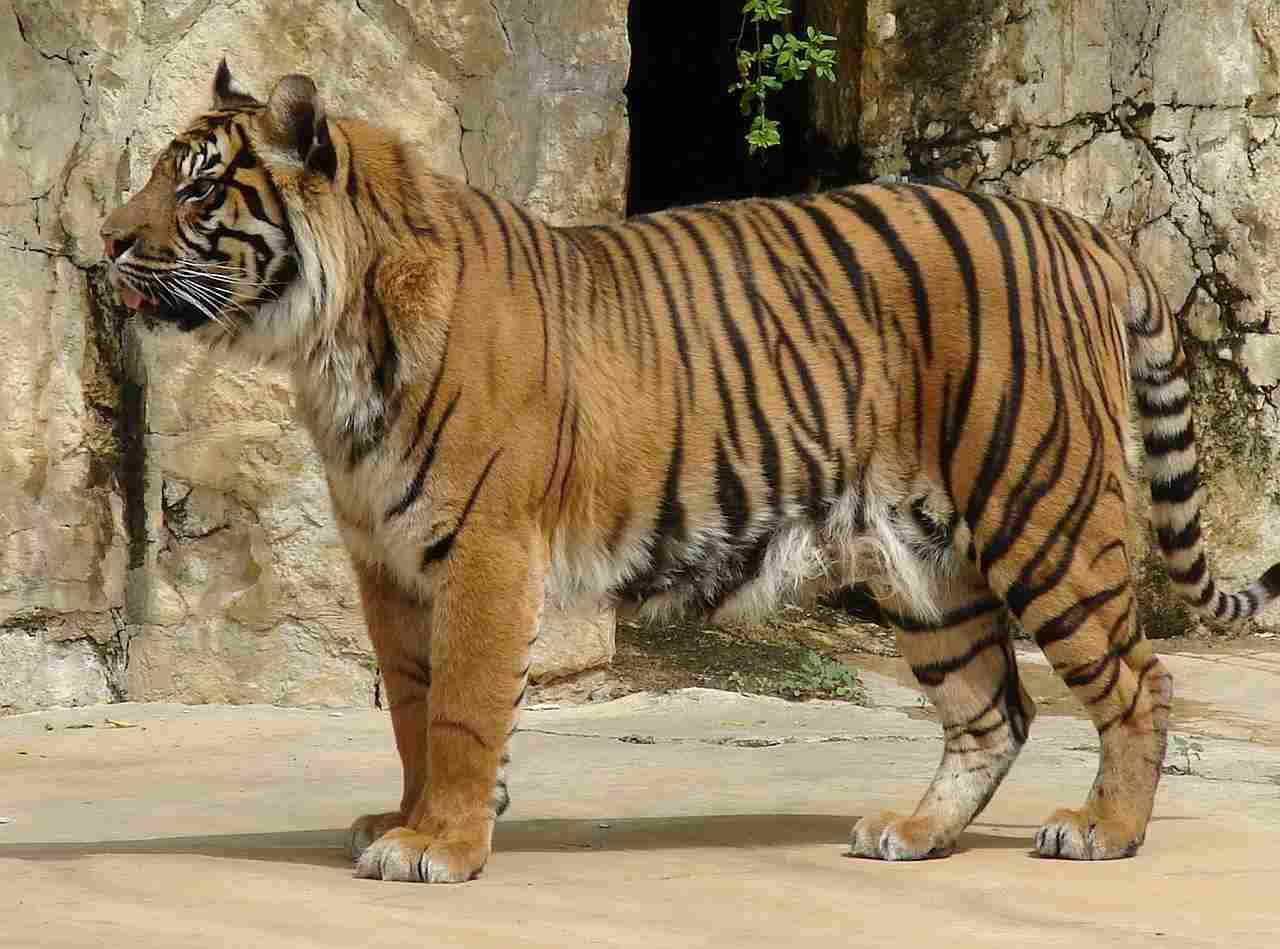
Chimpanzee:
Covered in coarse black or brown fur
Prominent facial features, expressive eyes
Longer arms than legs, opposable thumbs
Facial skin darkens with age
Tiger:
Striking orange coat with black stripes
White underbelly and facial markings
Powerful build, muscular body
Distinctive facial markings for individual identification
Comparison:
Chimpanzees exhibit a more varied color range in their fur, while tigers are characterized by their distinct striped pattern and vibrant orange hue.
Ecological Implications:
Chimpanzee camouflage in forest environments aids in foraging and protection, while the tiger’s striped pattern provides effective concealment in various habitats, especially grasslands.
3. Size
Chimpanzee:
Adult males: 3 to 4 feet tall
Adult females: Slightly smaller than males
Tiger:
Length: 9 to 13 feet (including tail)
Height: 3 to 4 feet at the shoulder
Comparison:
Tigers are substantially larger than chimpanzees, both in length and height, reflecting their distinct positions in the food chain.
Ecological Implications:
Size influences the trophic levels each species occupies, with tigers positioned as apex predators, regulating herbivore populations, while chimpanzees play a role in the ecosystem’s dynamics as omnivorous foragers.
4. Weight
Chimpanzee:
Adult males: 90 to 150 pounds
Adult females: Slightly lighter than males
Tiger:
Weight: 200 to 700 pounds
Comparison:
Tigers are significantly heavier than chimpanzees, reflecting their distinct roles in the ecosystem as large carnivores.
Ecological Implications:
The weight difference contributes to the ecological balance, with tigers having a more substantial impact on regulating prey populations due to their higher position in the food chain.
5. Bite Force (PSI)


Chimpanzee:
Bite force not well-documented, but estimated to be strong relative to body size. Generally, the bite force of chimpanzees tends to exceed 1,000 PSI.
Tiger:
Bite force: Approximately 1,000 to 1,500 pounds per square inch (PSI)
Comparison:
Tigers possess a significantly higher bite force than chimpanzees, which is adapted for subduing and consuming larger prey.
Ecological Implications:
The tiger’s powerful bite is crucial for hunting and securing prey, while the chimpanzee’s bite is adapted for a different range of foods, influencing their roles in the ecosystem.
6. Physical Offensive Advantages
Chimpanzee:
Sharp canine teeth for biting
Strong arms and hands for tool use and climbing
Agility and quick movements enhance offensive capabilities
Tiger:
Powerful jaws and sharp, retractable claws
Speed and stealth for ambushing prey
Strong hind limbs for leaping and tackling
Comparison:
While both possess strong offensive features, the chimpanzee relies more on agility and tool use, whereas the tiger’s strength lies in its powerful jaws and claws.
Ecological Implications:
These offensive adaptations contribute to the roles each species plays in their respective ecosystems, with chimpanzees influencing smaller prey populations through hunting and foraging, and tigers impacting larger herbivore populations as apex predators.
7. Physical Defensive Advantages

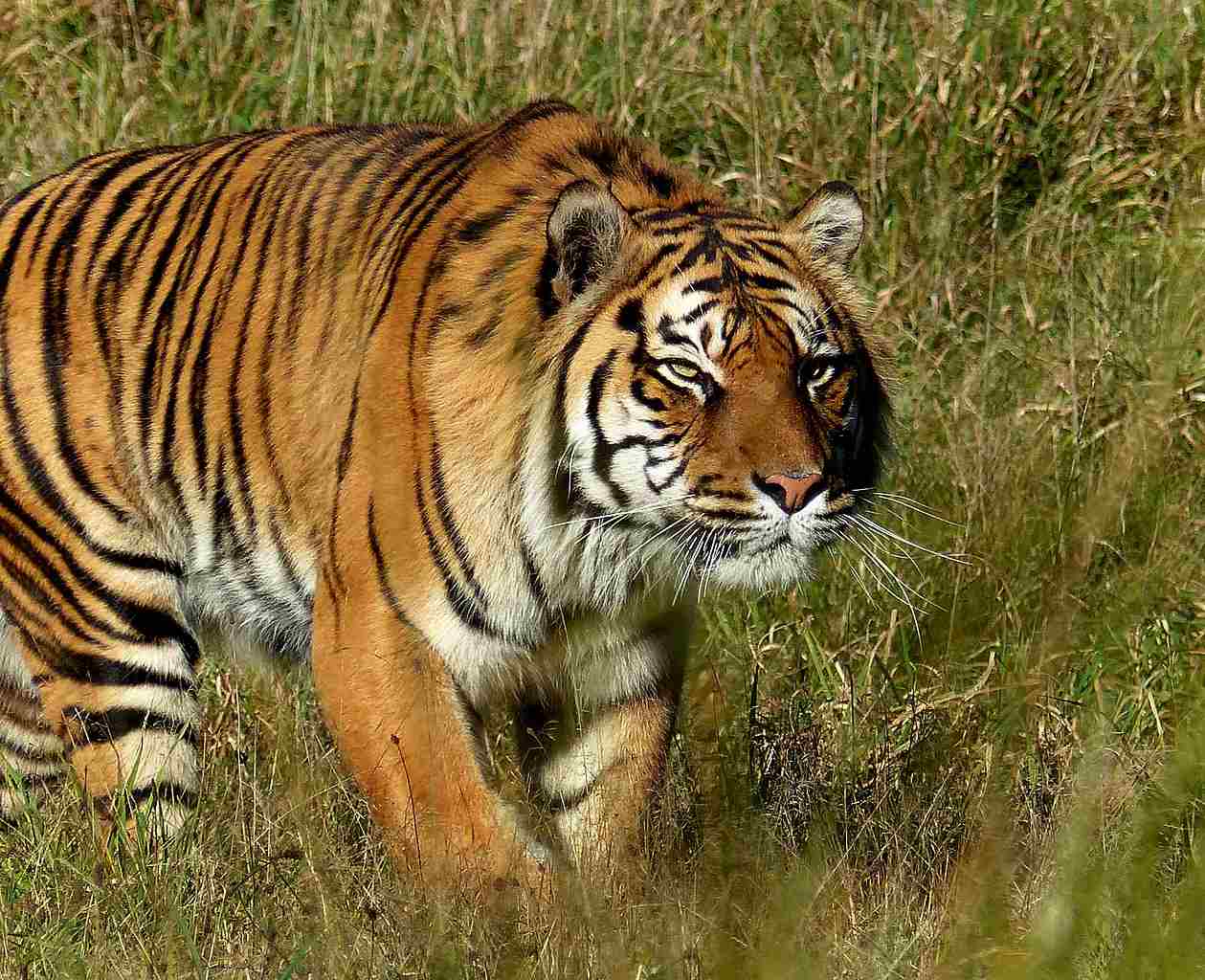
Chimpanzee:
Social structure and group cooperation for protection
Climbing abilities to escape ground predators
Facial expressions and vocalizations as defensive communication
Tiger:
Camouflage for avoiding detection
Agility for evading threats
Retractable claws and powerful bite for self-defense
Comparison:
While both species have evolved defensive mechanisms, chimpanzees rely more on social structures, communication, and climbing, whereas tigers utilize camouflage, agility, and physical prowess.
Ecological Implications:
These defensive strategies contribute to the balance within their ecosystems, with chimpanzees relying on communal protection and tigers using individual defensive adaptations to survive in their respective habitats.
8. Speed (Km/hour or Mile/hour)
Chimpanzee:
Running speed: Up to 40 km/h (25 mph)
Tiger:
Running speed: 49 to 65 km/h (30 to 40 mph)
Comparison:
Tigers are faster runners than chimpanzees, reflecting their roles as predators requiring speed for successful hunting.
Ecological Implications:
The speed of tigers is essential for chasing down prey, while the chimpanzee’s agility serves more for navigating their environment and avoiding ground threats. These differences impact the dynamics of their ecosystems.
9. Agility
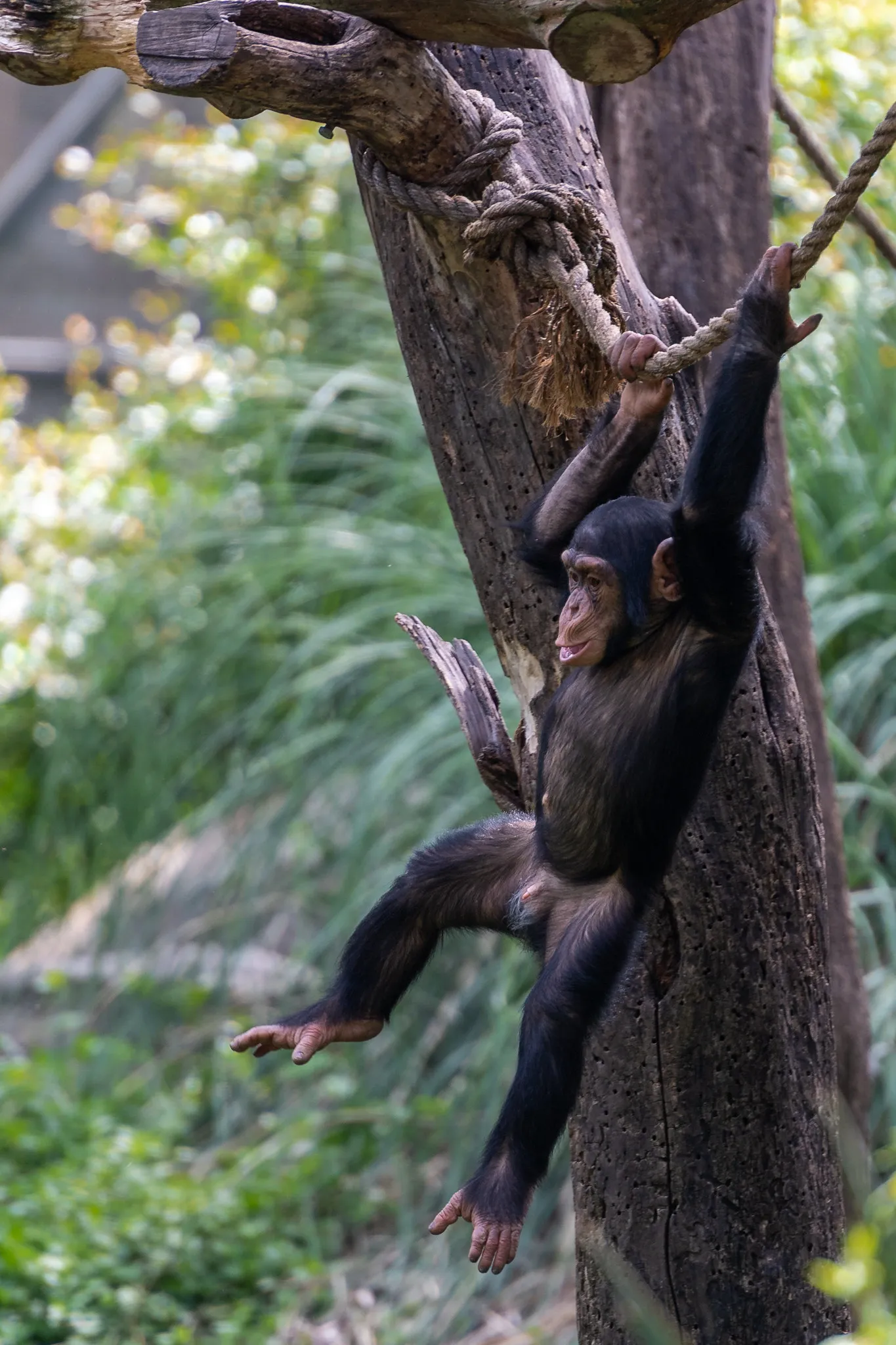
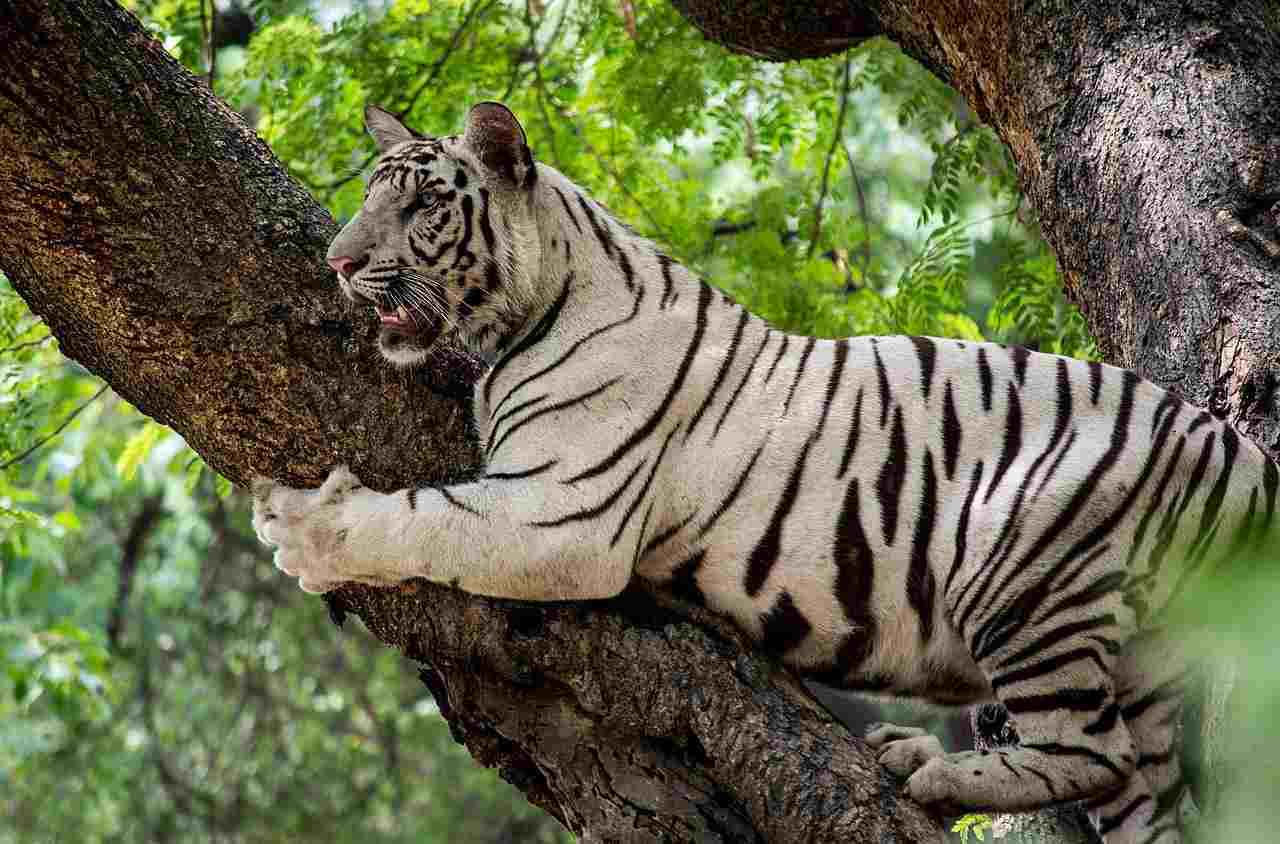
Chimpanzee:
Exceptional climbing and swinging abilities
Quick and precise movements
Tool use for various tasks
Tiger:
Agile and flexible body for stalking and ambushing prey
Able to navigate diverse terrains with ease
Comparison:
Both species display impressive agility, but chimpanzees excel in climbing and tool use, while tigers showcase agility in stalking and ambushing.
Ecological Implications:
The distinct agility of each species contributes to their ecological roles, with chimpanzees utilizing trees for safety and food, and tigers relying on agility for successful hunting and navigation in their habitats.
10. Senses
Chimpanzee:
Excellent vision, both in color and low light
Well-developed sense of hearing
Keen sense of smell
Tiger:
Exceptional night vision
Acute hearing for detecting prey movements
Strong sense of smell
Comparison:
Both species possess heightened senses, but the tiger’s superior night vision gives it an advantage during nocturnal activities.
Ecological Implications:
These sensory adaptations contribute to the efficiency of each species in their ecological roles, with chimpanzees relying on various senses for foraging and social communication, while tigers use theirs for successful hunting, especially during the night.
11. Overall Physical Capacity
Chimpanzee:
Endurance for traveling long distances
Dexterity for tool use and manipulation
Adaptability to various environments
Tiger:
Powerful physique for hunting and carrying prey
Stamina for long-distance pursuits
Adaptability to diverse habitats
Comparison:
Chimpanzees showcase remarkable endurance and dexterity, while tigers exhibit strength and stamina, each adapted to their specific ecological roles.
Ecological Implications:
These physical capacities contribute to the overall fitness of each species in their respective environments, influencing their roles in the ecosystems they inhabit.
12. Habitat Preference(s) and Geographic Region
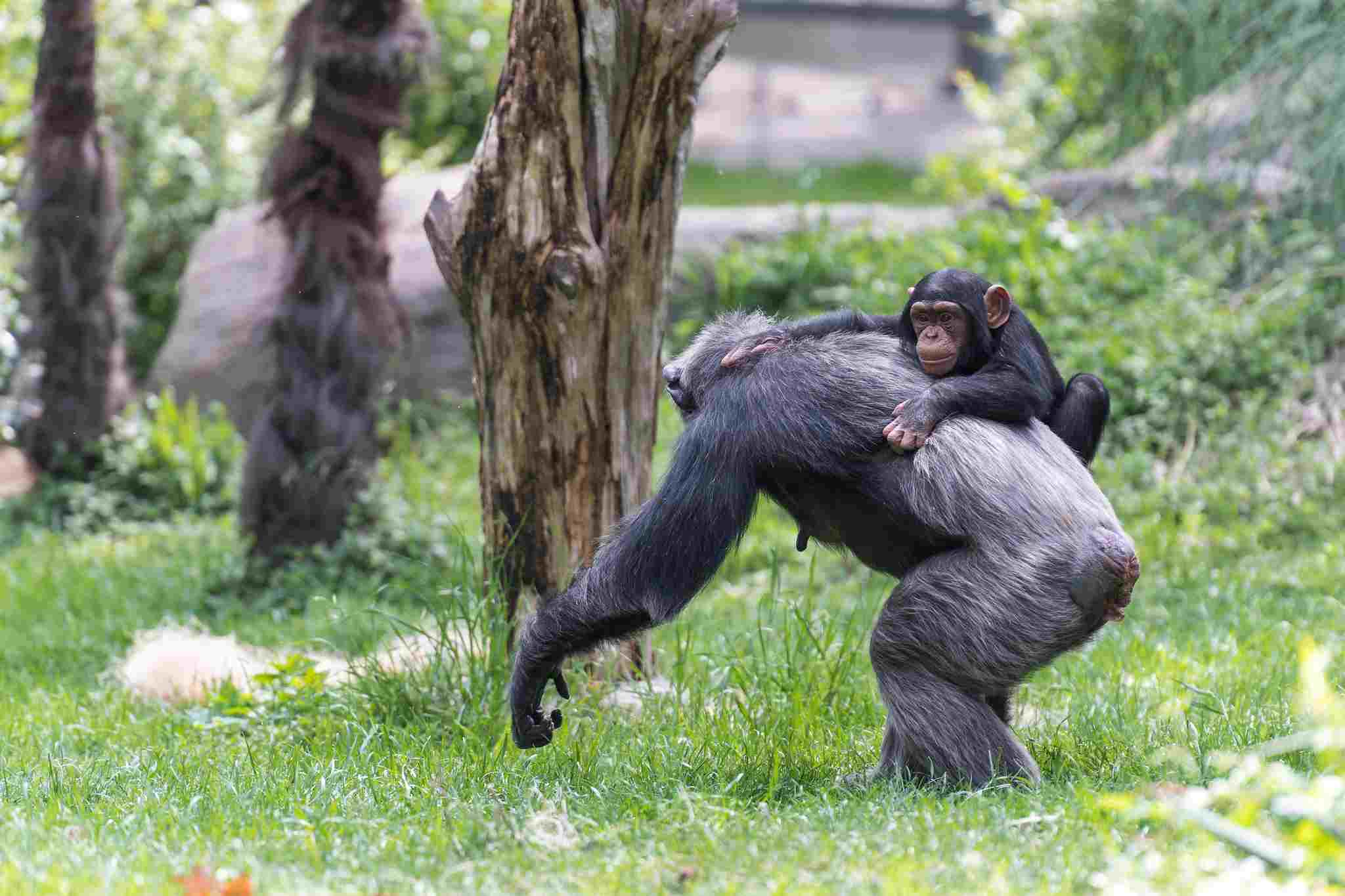
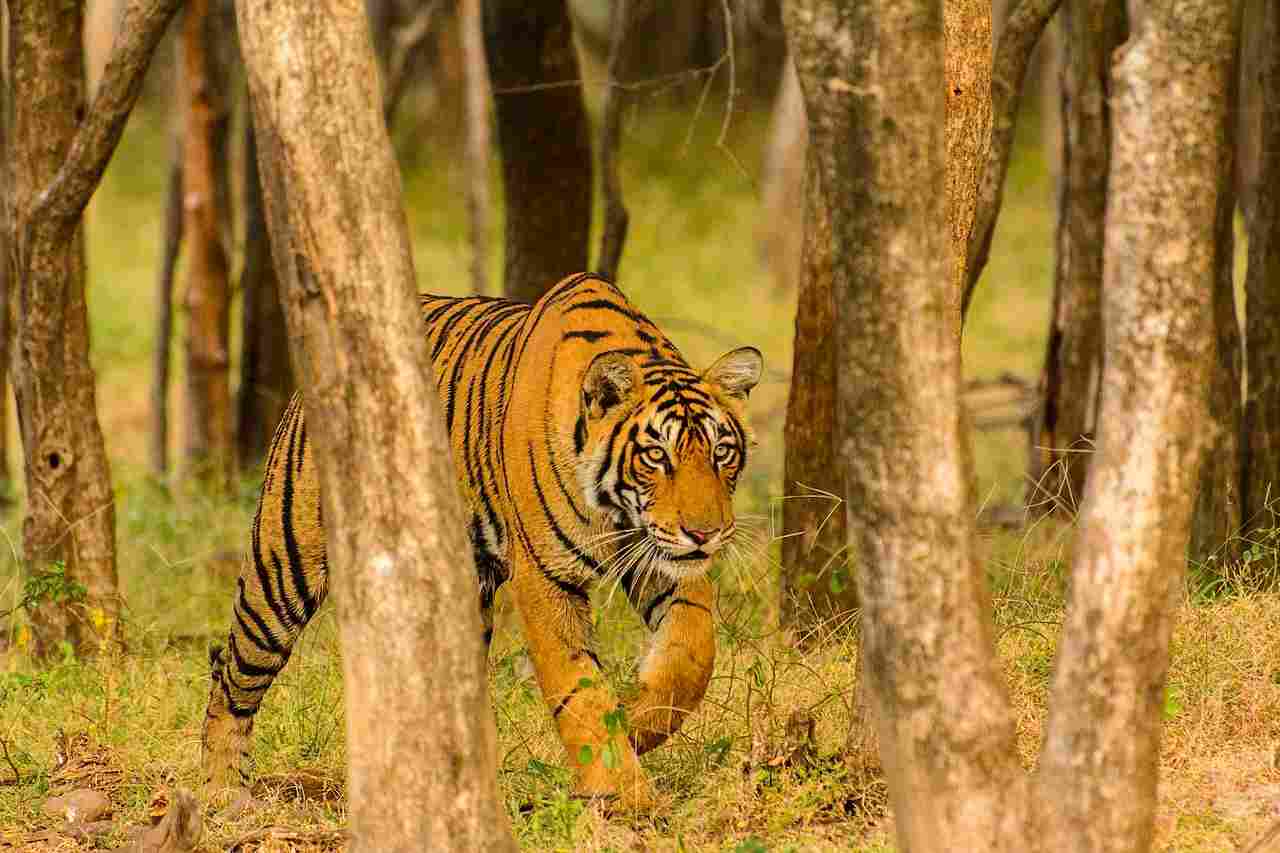
Chimpanzee:
Dense tropical and subtropical forests
Found in Central and West Africa
Tiger:
Varied habitats including grasslands, forests, and mangrove swamps
Geographically distributed in Asia, from Siberia to the Indian subcontinent
Comparison:
While both species exhibit adaptability to different environments, chimpanzees primarily inhabit dense forests, whereas tigers occupy a wider range of habitats.
Ecological Implications:
Habitat preferences influence the ecosystems they inhabit, with chimpanzees contributing to the dynamics of tropical forests and tigers playing a crucial role in diverse ecosystems across their geographical range.
13. Tracks
Chimpanzee:
Handprints and footprints with opposable thumbs visible
Typically found on the ground or tree branches
Tiger:
Paw prints with retractable claws
Indicate the presence of a large feline predator
Comparison:
Chimpanzee tracks reflect both hand and foot impressions, emphasizing their arboreal and terrestrial lifestyles, while tiger tracks showcase the distinctive paw prints of a large carnivore.
Ecological Implications:
Tracking these species’ prints aids in monitoring and understanding their movements within their respective habitats, contributing to conservation and ecological research efforts.
14. Lifespan
Chimpanzee:
Approximately 40 to 50 years in the wild
Can live longer in captivity with proper care
Tiger:
Typically 15 to 20 years in the wild
Longer lifespans in captivity compared to the wild
Comparison:
Chimpanzees generally have a longer natural lifespan than tigers, both in the wild and captivity.
Ecological Implications:
Lifespan influences population dynamics, with the longer life expectancy of chimpanzees impacting social structures and ecological interactions in their habitats.
15. Mode of Feeding
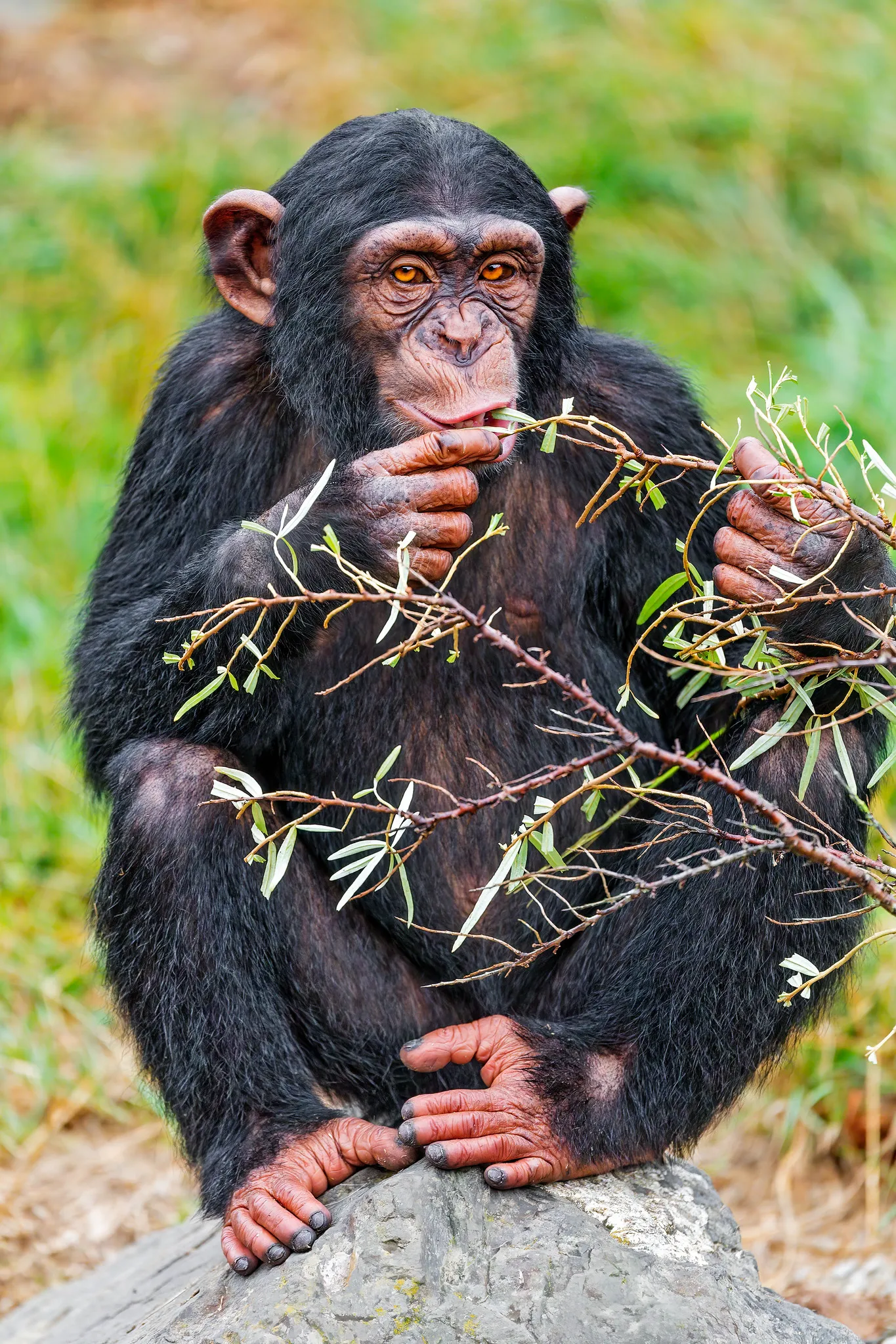
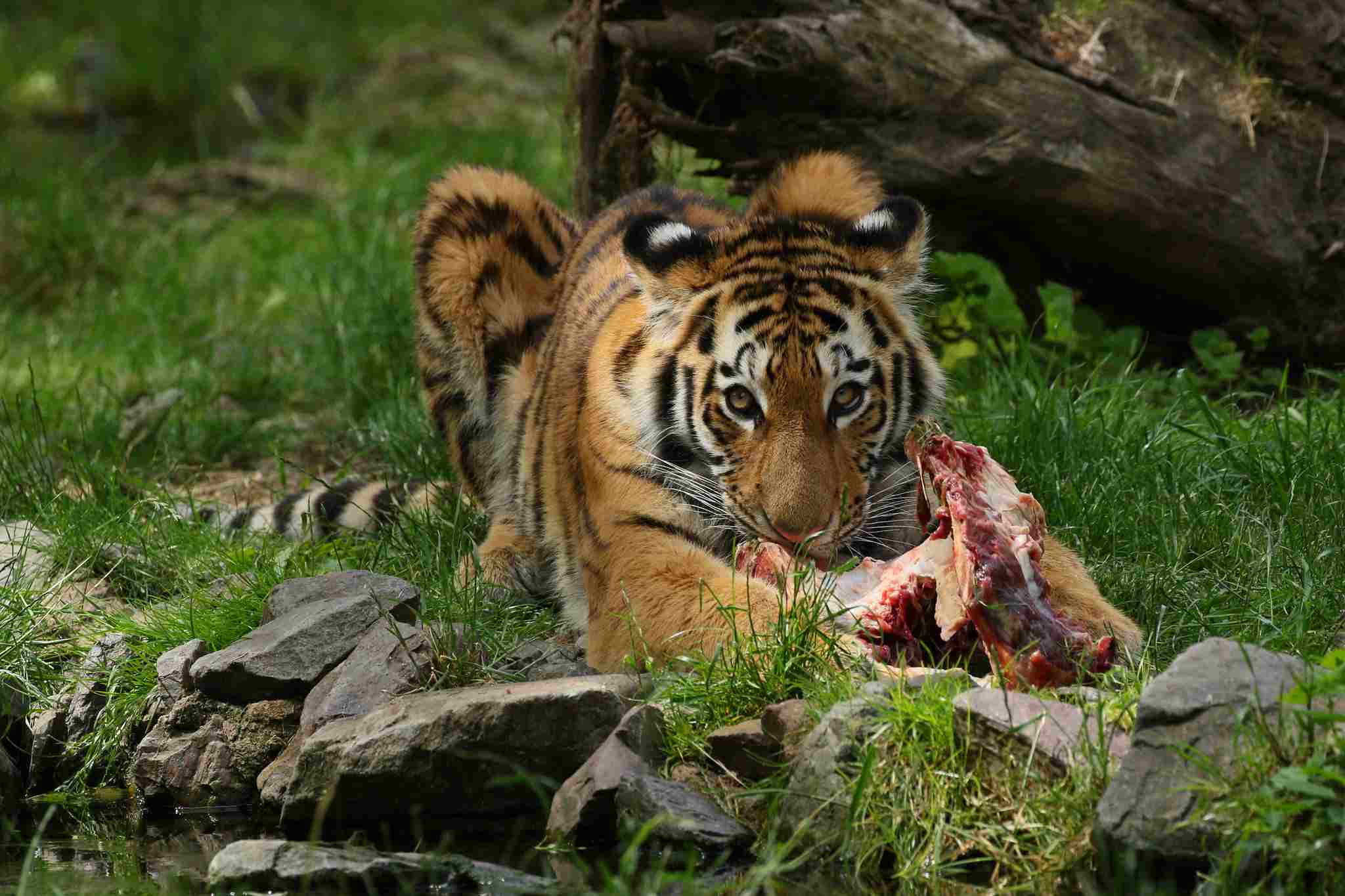
Chimpanzee:
Omnivores, primarily frugivores and insectivores
Use tools for extracting insects and acquiring food
Tiger:
Carnivores, primarily hunting large ungulates
Solitary hunters relying on stealth and strength
Comparison:
While both are opportunistic in their diets, chimpanzees exhibit omnivorous habits with a focus on fruits and insects, whereas tigers are obligate carnivores.
Ecological Implications:
Differences in feeding habits impact prey populations and influence the structure of ecosystems, with chimpanzees contributing to seed dispersal and insect control, and tigers regulating herbivore populations.
16. Intelligence

Chimpanzee:
Highly intelligent, capable of problem-solving
Tool use for various tasks, including obtaining food
Tiger:
Intelligent hunters with strategic approaches
Lack the complex problem-solving and tool-use observed in chimpanzees
Comparison:
Chimpanzees demonstrate a higher level of cognitive abilities, including problem-solving and tool use, compared to tigers.
Ecological Implications:
The intelligence of chimpanzees influences their foraging strategies and social structures, while the more instinctive hunting behaviors of tigers contribute to their role as apex predators in maintaining ecological balance.
17. Social Behavior
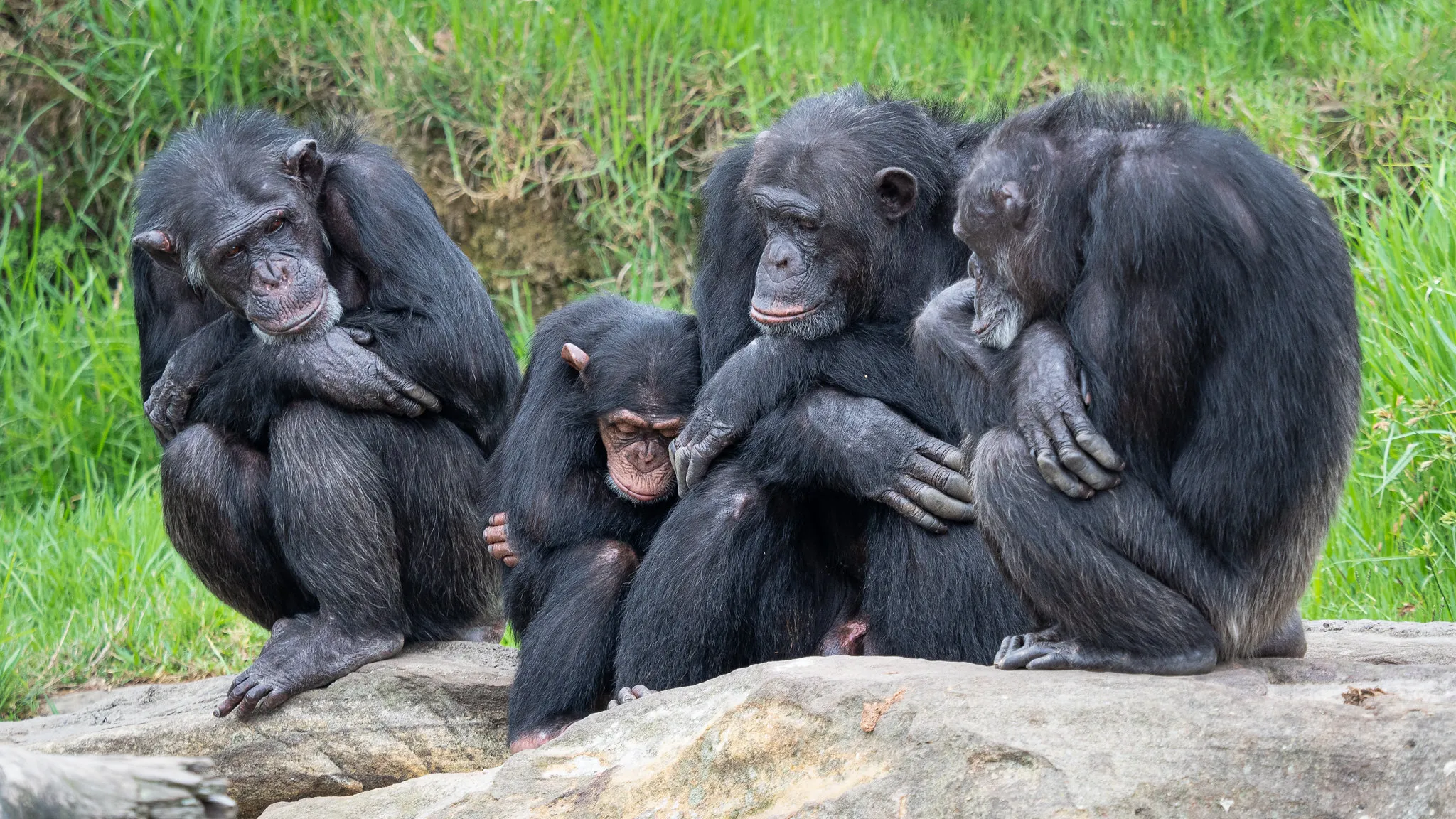

Chimpanzee:
Highly social, forming complex communities
Live in multi-male, multi-female groups
Tiger:
Generally solitary except during mating or cub-rearing
Territory-based interactions rather than complex social structures
Comparison:
Chimpanzees are known for their intricate social behaviors and strong community bonds, while tigers exhibit a more solitary lifestyle with limited social interactions.
Ecological Implications:
Social structures impact the ecological roles of these species, with chimpanzees engaging in cooperative hunting and sharing resources within their communities, while tigers’ solitary nature influences their territory-based roles as apex predators.
18. Mode of Reproduction
Chimpanzee:
Sexual reproduction with a gestation period of around 230 days
Typically give birth to a single offspring
Females provide extensive maternal care
Tiger:
Sexual reproduction with a gestation period of approximately 93 to 112 days
A litter usually consists of 2 to 4 cubs
Female tigers are responsible for cub care
Comparison:
While both species reproduce sexually, chimpanzees have a longer gestation period and typically give birth to a single offspring, whereas tigers have a shorter gestation period and usually give birth to multiple cubs.
Ecological Implications:
Reproductive strategies impact population dynamics, with chimpanzees exhibiting slower population growth compared to the potentially larger litters of tigers, influencing their respective roles in the ecosystem.
19. Parental Behavior
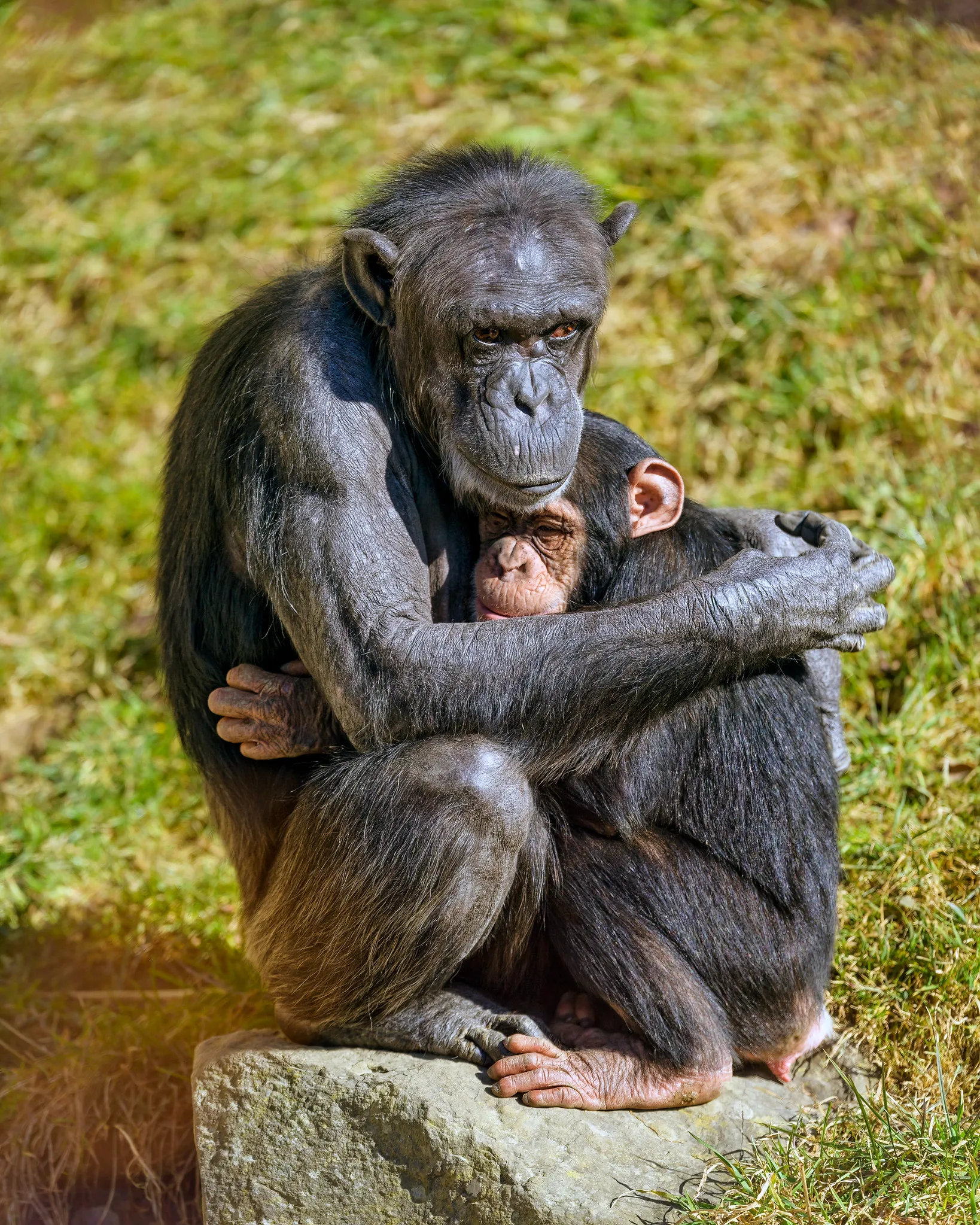
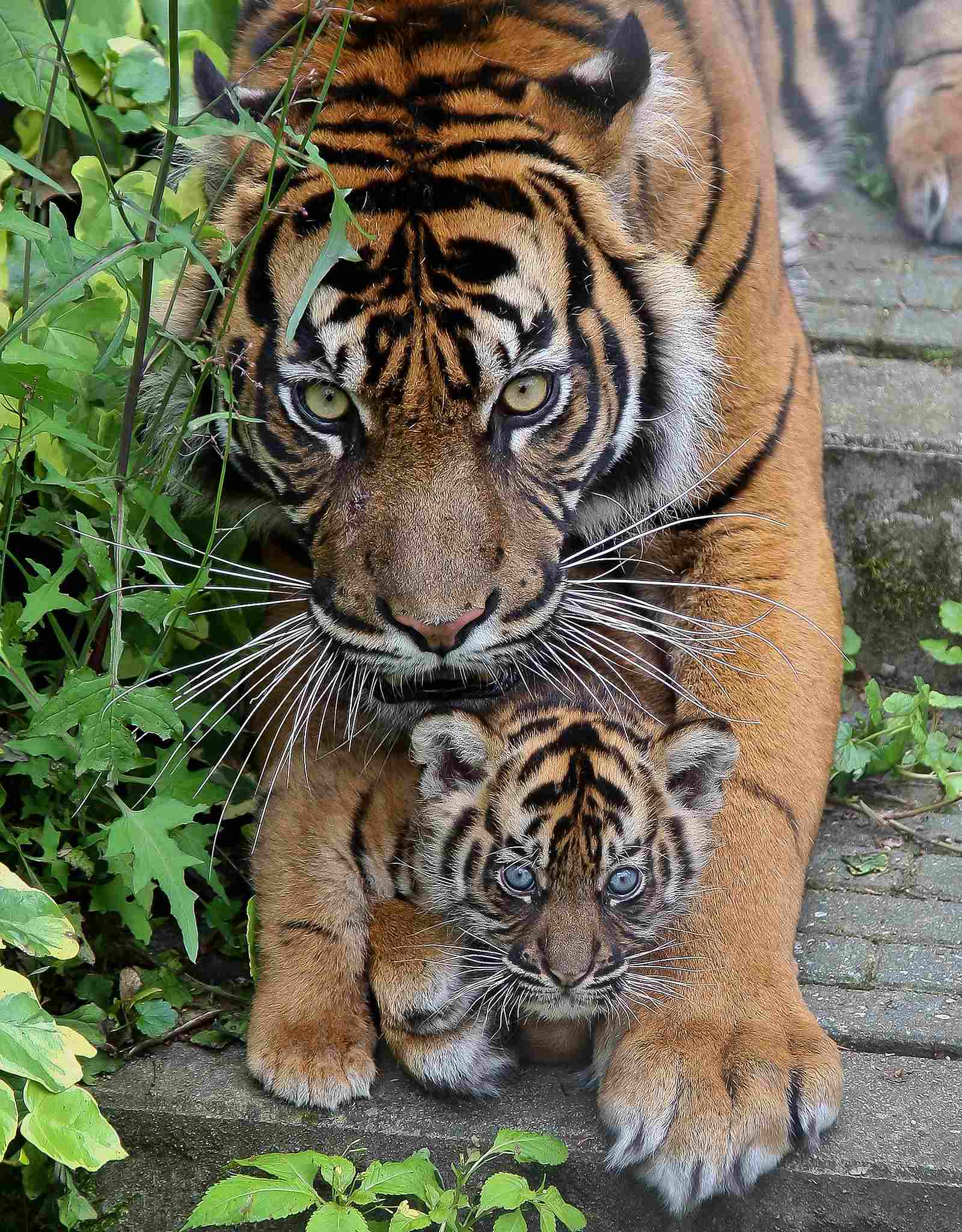
Chimpanzee:
Strong maternal bonds, with females providing extensive care for their offspring
Offspring stay with their mothers for several years, learning essential skills
Tiger:
Females are responsible for raising and teaching their cubs
Cubs stay with their mothers for about 1.5 to 2 years before becoming independent
Comparison:
Both species exhibit strong maternal care, but chimpanzees have a more extended period of offspring dependence compared to tigers.
Ecological Implications:
Parental behaviors influence the survival and development of offspring, impacting the stability and dynamics of each species’ population in their respective ecosystems.
20. Proximity to Human-Inhabited Areas
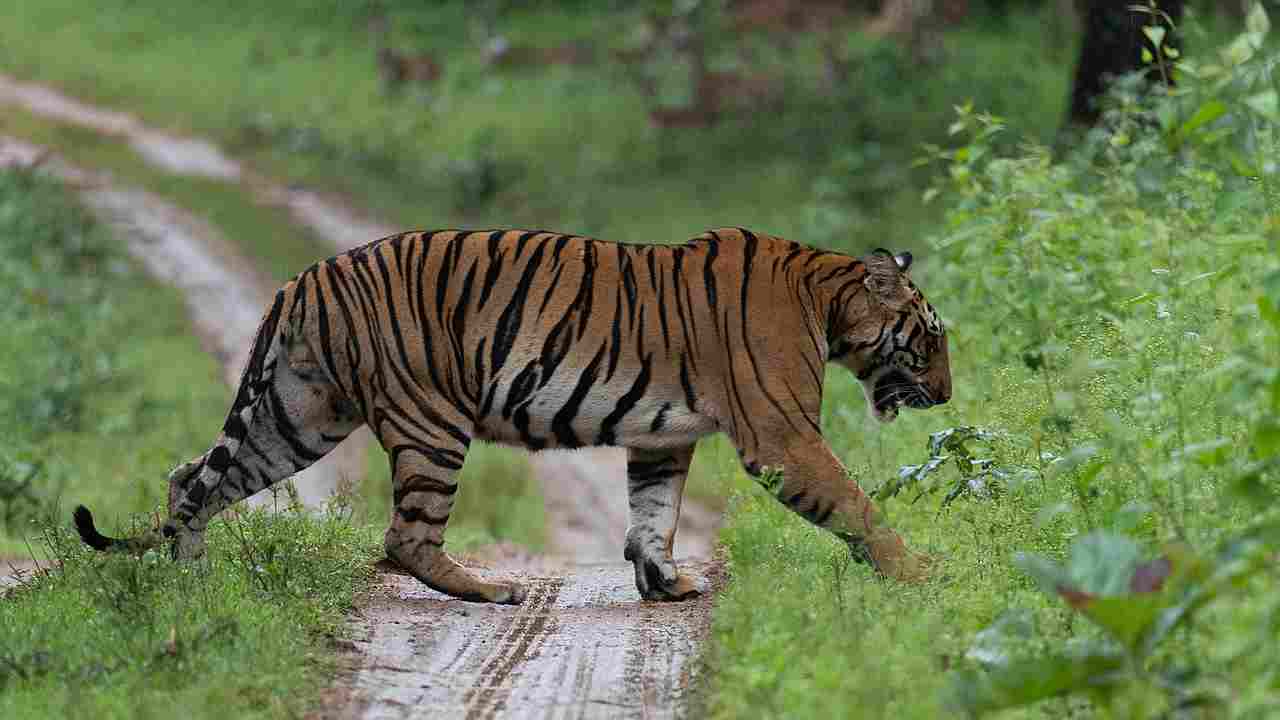
Chimpanzee:
Found in forested regions, sometimes in close proximity to human settlements
Can be affected by habitat loss and fragmentation due to human activities
Tiger:
Human-tiger conflicts may arise in areas where tiger habitats overlap with human settlements
Conservation efforts often focus on mitigating such conflicts
Comparison:
Both species may come into proximity with human-inhabited areas, leading to potential conflicts and conservation challenges.
Ecological Implications:
The interaction between these species and human populations has implications for conservation efforts, habitat protection, and coexistence strategies.
21. Behavior Toward Humans
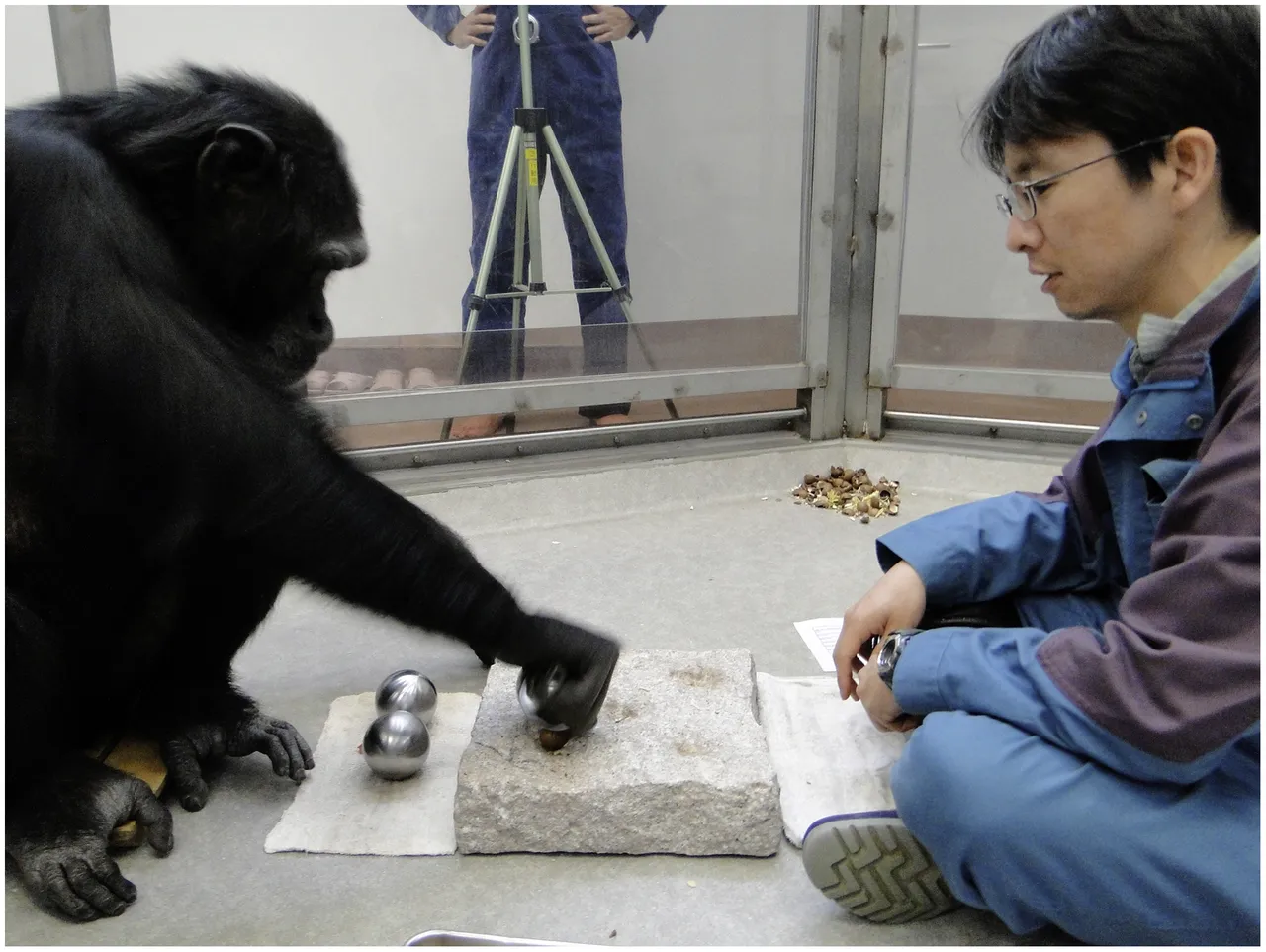
Chimpanzee:
Generally avoid direct confrontation with humans
May become aggressive if they feel threatened or provoked
Human presence can impact their natural behaviors
Tiger:
Generally shy and elusive, avoiding human contact
Human-tiger conflicts may occur if tigers feel threatened or if their territories are encroached upon
Comparison:
Both species tend to avoid direct interaction with humans, but circumstances such as threats or habitat disturbances can lead to defensive or aggressive behaviors.
Ecological Implications:
Understanding and managing interactions between these species and humans are crucial for conservation efforts, as conflicts can impact the survival and well-being of both chimpanzees and tigers.
22. Danger Posed to Humans
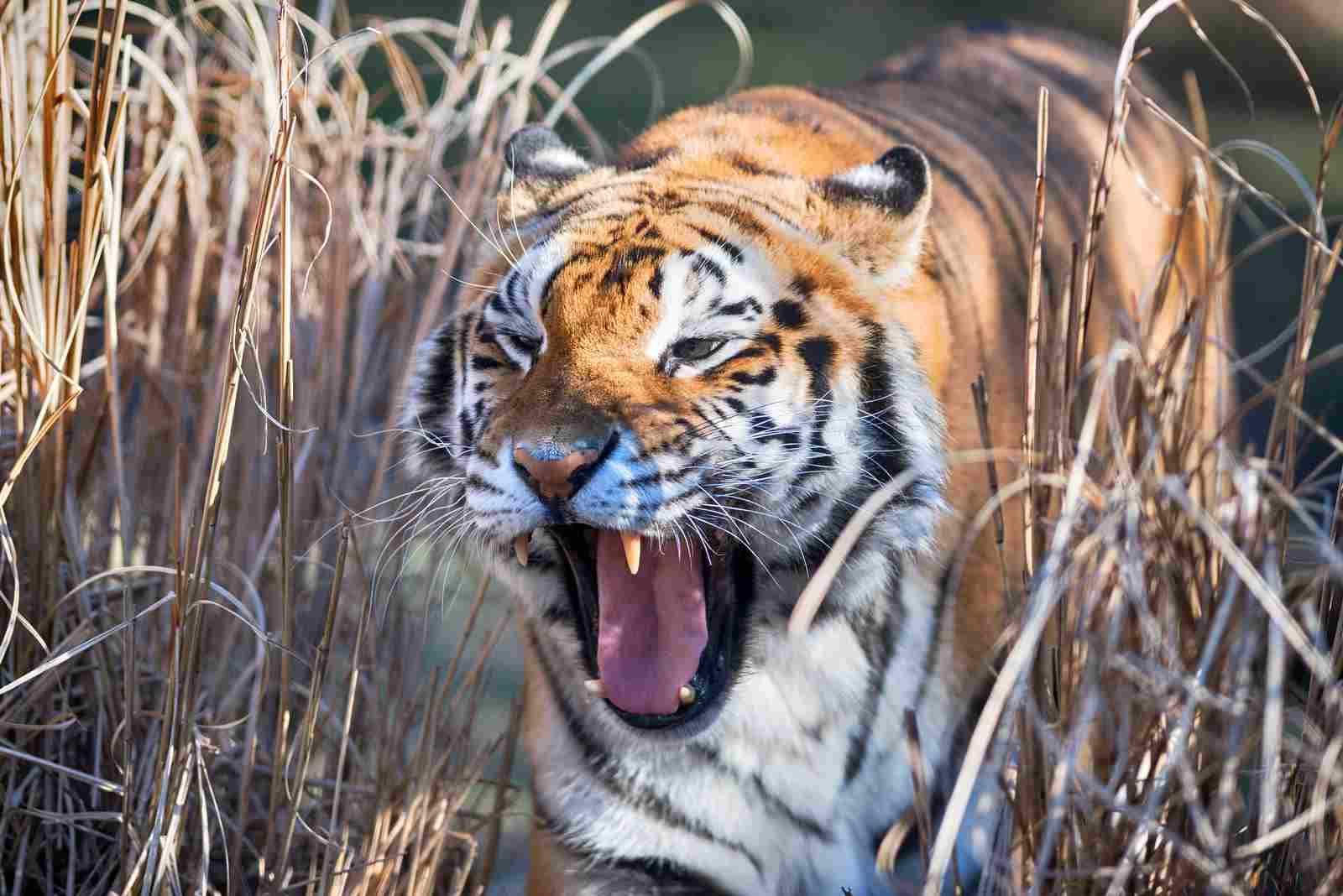
Chimpanzee:
Generally not considered highly dangerous to humans
May exhibit aggressive behavior if provoked or feel threatened
Tiger:
Can pose a significant threat to humans, especially if cornered or surprised
Human-tiger conflicts may result in attacks
Comparison:
While chimpanzees may display aggression if provoked, tigers pose a higher potential danger to humans, particularly in cases of territorial disputes or unexpected encounters.
Ecological Implications:
Human-wildlife conflict, especially with tigers, necessitates conservation strategies that prioritize both species’ safety while minimizing negative impacts on ecosystems.
23. Associated Precautions

Chimpanzee:
Caution should be exercised to avoid provoking or startling chimpanzees
Respect for their natural behavior and habitats is essential
Tiger:
Strict precautions are necessary in regions where tigers inhabit
Measures to avoid surprise encounters and habitat preservation are crucial
Comparison:
Precautions for both species involve understanding and respecting their natural behaviors, but additional care and safeguards are needed in areas with tiger populations due to the potential danger.
Ecological Implications:
Implementing precautions helps reduce human-wildlife conflicts, fostering coexistence and contributing to the conservation of these species and their habitats.
24. Conservation Status
Chimpanzee:
Varies by subspecies, but overall, chimpanzees are listed as endangered or vulnerable
Threats include habitat loss, poaching, and disease
Tiger:
Various tiger subspecies are classified as endangered or critically endangered
Threats include habitat destruction, poaching for body parts, and human-wildlife conflicts
Comparison:
Both chimpanzees and tigers face significant conservation challenges, with habitat loss and human activities being primary threats.
Ecological Implications:
Conservation efforts are crucial for maintaining biodiversity, preserving ecosystems, and addressing the interconnected challenges faced by these species.
*Summary of Comparison
Taxonomy:
Chimpanzees belong to the family Hominidae, while tigers are part of the family Felidae.
Appearance:
Chimpanzees have coarse fur and expressive features, while tigers have a distinctive orange coat with black stripes.
Size:
Tigers are significantly larger than chimpanzees, with a notable difference in height and length.
Weight:
Tigers outweigh chimpanzees, reflecting their positions in different trophic levels.
Bite Force (PSI):
Tigers possess a much stronger bite force than chimpanzees, crucial for subduing larger prey.
Physical Offensive Advantages:
Chimpanzees rely on agility and tool use, while tigers use powerful jaws and claws.
Physical Defensive Advantages:
Chimpanzees emphasize social structures, while tigers use camouflage and physical prowess.
Speed:
Tigers are faster runners than chimpanzees, essential for successful hunting.
Agility:
Both species display agility, with chimpanzees excelling in climbing and tool use, while tigers use agility for stalking.
Senses:
Both possess heightened senses, with tigers having superior night vision.
Overall Physical Capacity:
Chimpanzees showcase endurance and dexterity, while tigers exhibit strength and stamina.
Habitat Preference(s) and Geographic Region:
Chimpanzees prefer dense forests in Central and West Africa, while tigers inhabit varied habitats across Asia.
Tracks:
Chimpanzee tracks show hand and foot impressions, while tiger tracks indicate large feline prints.
Lifespan:
Chimpanzees generally have a longer natural lifespan than tigers.
Mode of Feeding:
Chimpanzees are omnivores with a focus on fruits and insects, while tigers are obligate carnivores.
Intelligence:
Chimpanzees demonstrate higher cognitive abilities, including problem-solving and tool use.
Social Behavior:
Chimpanzees are highly social with complex communities, while tigers are generally solitary.
Mode of Reproduction:
Chimpanzees have a longer gestation period and typically give birth to a single offspring, while tigers have a shorter gestation period and usually give birth to multiple cubs.
Parental Behavior:
Both species exhibit strong maternal care, with chimpanzees having a more extended period of offspring dependence.
Proximity to Human-Inhabited Areas:
Both may come into proximity with human-inhabited areas, leading to potential conflicts.
Behavior Toward Humans:
Both tend to avoid direct interaction with humans, but circumstances can lead to defensive or aggressive behaviors.
Danger Posed to Humans:
Tigers pose a higher potential danger to humans compared to chimpanzees.
Associated Precautions:
Precautions involve understanding and respecting their natural behaviors, with additional care needed in areas with tiger populations.
Conservation Status:
Both species face conservation challenges, with habitat loss and human activities being primary threats.
Conclusion
-Similarities:
Both chimpanzees and tigers face threats related to habitat loss, human-wildlife conflict, and poaching.
Conservation efforts play a vital role in ensuring the survival of these species and maintaining the ecological balance of their respective habitats.
-Differences:
While both species exhibit unique ecological roles, chimpanzees contribute to forest dynamics and small prey regulation, while tigers play a crucial role as apex predators in diverse ecosystems.
The conservation status, associated precautions, and danger posed to humans vary, emphasizing the need for tailored conservation strategies for each species.

